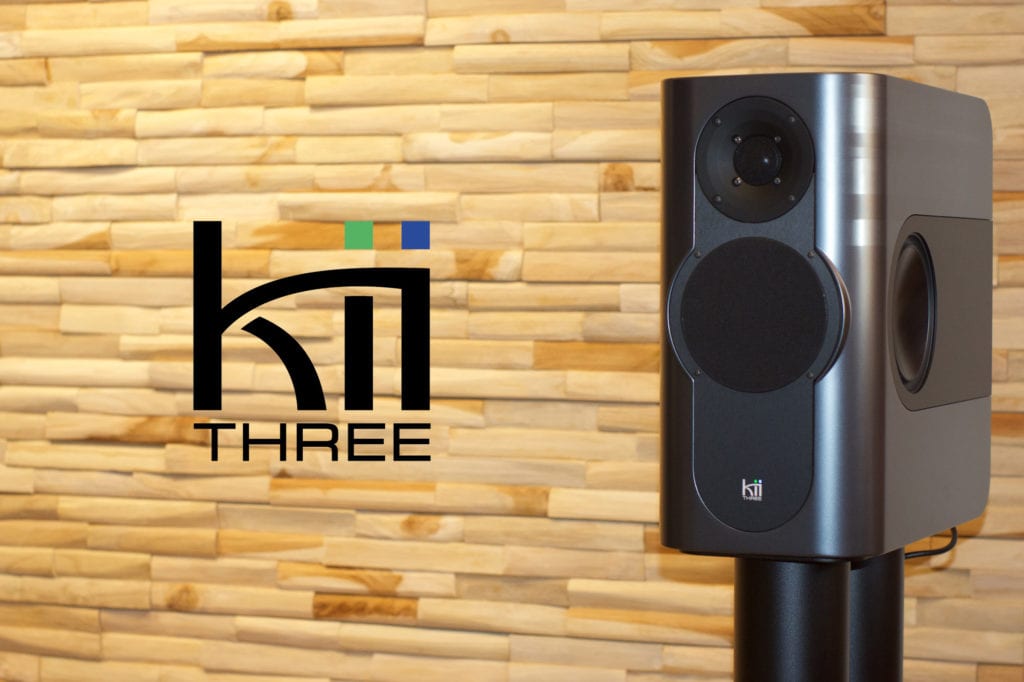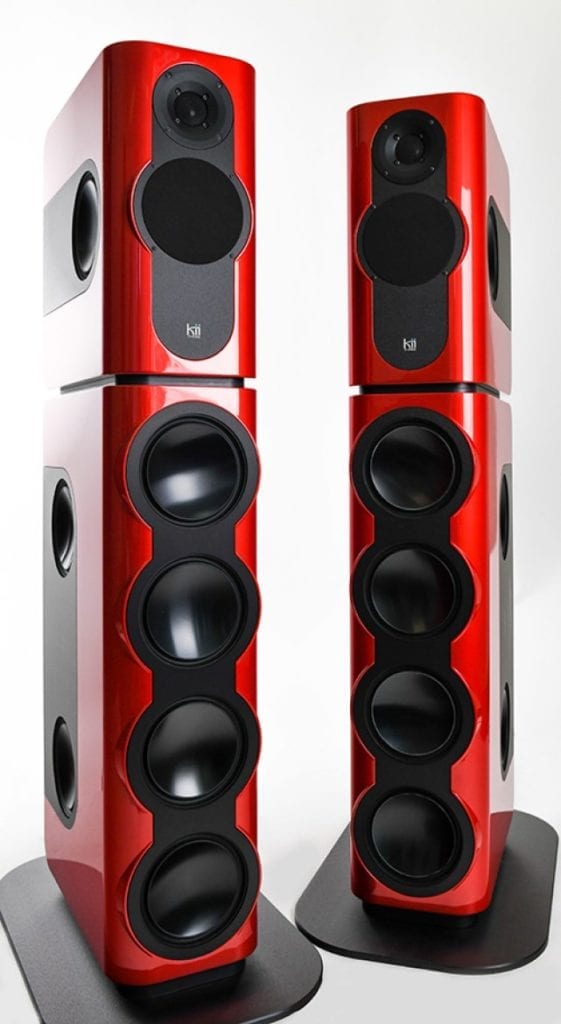Some months ago, Dave Sprake, an all round good egg who I’ve known for close-on 25 years, mentioned that he wanted to bring along a product called the Kii Three System. “I think you’ll like it, it’s clever, much more than just an active loudspeaker”.
Time passed, largely because of the Munich Show, and finally in late May 2018, Dave came along with Andy Baker from Sound Design Distribution. They brought these rather unusual stand-mount speakers. Initially, they were connected via an exotic USB cable to Andy’s laptop for the warm-up. Results were pretty good but progressing onto just the entry level Melco N1A-II music server brought, we felt, a significant uplift in quality. I coincidentally swapped to a rather more mundane QED USB cable too. Familiar territory is good.
Kii Three is an unusually proportioned, 40cm deep, 40 cm high and 20 cm wide stand (or shelf) mount system. Fully digital, fully active, it can handle both digital and analogue inputs and powers each of the six drivers with a separate 250 Watt class D power amplifier.
With all the cross-overs and phase alignment, there is quite a lot of DSP going on. They certainly utilise the multiple drivers in an unusual way. With mid-range and treble facing forwards, the additional four bass drivers face sidewards and rearwards. The idea is to propagate a sound wave towards the listener whilst minimising room effects. It works too.
Stick your head in the corner behind any conventional loudspeaker and you will almost certainly hear an exaggerated level of bass output. Do the same thing with the Kiis and you will hear almost zero bass content. It’s not quite as simple as the rear drivers doing ‘un-bass’, but it’s as close as I can get to explaining it.
These compact, albeit 1500 watt, speakers can be configured to drive just about any environment from just about any position. As ever, it’s best to position them to give the best unaided result, but some level of adjustment can be applied to make the results seriously engaging.
If these references to DSP (digital Sound Processing) make you feel that purism is lost, bear in mind that any music streamer or DAC will be doing this as a matter of course. Software updates for these devices routinely change how they sound.
As of the beginning of June ’18 we have our own pair. We’ve gone for one of the standard finishes (it’s grey or white). Having them painted in other colour you like costs £1000 more whilst the industrial crackle finish for studios is £1000 per pair less.
We’ve hooked up the Roon box feeding from a Melco server for the run-in process. Already, they are impressing. Soundstage in all dimensions can be extremely tangible and instruments and voices have a very real sense of presence. They sound nowhere near their physical size and will drive our large 7m tall space with ease as well as the more normally dimensioned ‘living’ rooms.
With the stands and control box, this a far from cheap system but it’s not stupidly expensive either. I swear I’m hearing stuff though these transducers that have eluded more expensive systems.
An addition called BXT was launched at Munich. It replaces the stands with powered bass drivers:
There are links to reviews on our Kii page but google brings more. This one caught my eye. Bob Macc’s Blog
HiFi News Aug 2018 Kii Audio Three Reprint


